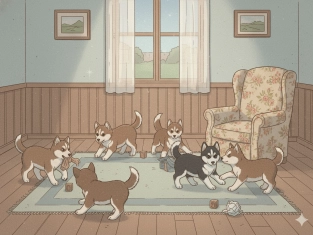Comparative and Superlative Forms of Adjectives and Adverbs
Table of Contents
Exercises
Explanation
-
Positive form: the basic adjective or adverb
large, quick, beautiful -
Comparative form: compares two things
larger, more beautiful, quicker -
Superlative form: compares three or more things
the largest, the most beautiful, the quickest
1. One-syllable adjectives and short adverbs
Most short adjectives and adverbs form comparisons by adding –er (comparative) and –est (superlative).
Examples
-
tall → taller → the tallest
-
fast → faster → the fastest
Common spelling changes
-
Double the final consonant (vowel + consonant):
big → bigger → the biggest -
Drop final –e:
close → closer → the closest -
Change y → i after a consonant:
dry → drier → the driest
Sample sentences
-
“This street is quieter at night than during the day.”
-
“That is the heaviest suitcase in the whole group.”
2. Two-syllable adjectives ending in –y, –er, –le, –ow
These adjectives often take –er / –est, but more / most is also possible, especially in more formal contexts.
Examples
-
happy → happier → the happiest
-
narrow → narrower → the narrowest
-
simple → simpler / more simple
Sample sentences
-
“This path is narrower than I expected.”
-
“Lena is always the happiest when she’s outdoors.”
3. Longer adjectives (two or more syllables)
Longer adjectives almost always use more for the comparative and most for the superlative.
Examples
-
attractive → more attractive → the most attractive
-
comfortable → more comfortable → the most comfortable
Sample sentences
-
“The new office chairs are more comfortable than the old ones.”
-
“Out of all the ideas, hers was the most creative.”
4. Comparatives and superlatives of adverbs
Adverbs follow rules similar to adjectives:
-
Short adverbs: add –er / –est
hard → harder, the hardest -
Long adverbs: use more / most
slowly → more slowly, the most slowly
Sample sentences
-
“He finished the puzzle faster than everyone else.”
-
“She speaks the most confidently during presentations.”
5. Irregular forms
Some adjectives and adverbs do not follow normal rules.
|
Positive |
Comparative |
Superlative |
|
good / well |
better |
best |
|
bad / badly |
worse |
worst |
|
many / much |
more |
most |
|
little |
less |
least |
|
far |
farther / further |
farthest / furthest |
Sample sentences
-
“This solution is better than the previous one.”
-
“Of all the students, Max is the least nervous before exams.”
6. Using articles
-
Comparatives may use a or the, depending on meaning:
“This is a cheaper hotel.”
“This is the cheaper option of the two.” -
Superlatives almost always use the:
“She is the most experienced member of the team.”
However, after linking verbs like be, the article may be optional:
-
“This method is (the) most effective in my opinion.”
7. Using “less” and “the least”
These forms express a lower degree of quality or intensity.
Examples
-
“This book is less interesting than the first one.”
-
“That was the least useful piece of advice.”
Quick Summary
|
Type |
Form |
Example |
|
Positive |
Basic adjective/adverb |
“The room is bright.” |
|
Comparative |
–er / more |
“This room is brighter.” |
|
Superlative |
–est / most |
“This is the brightest room in the house.” |

